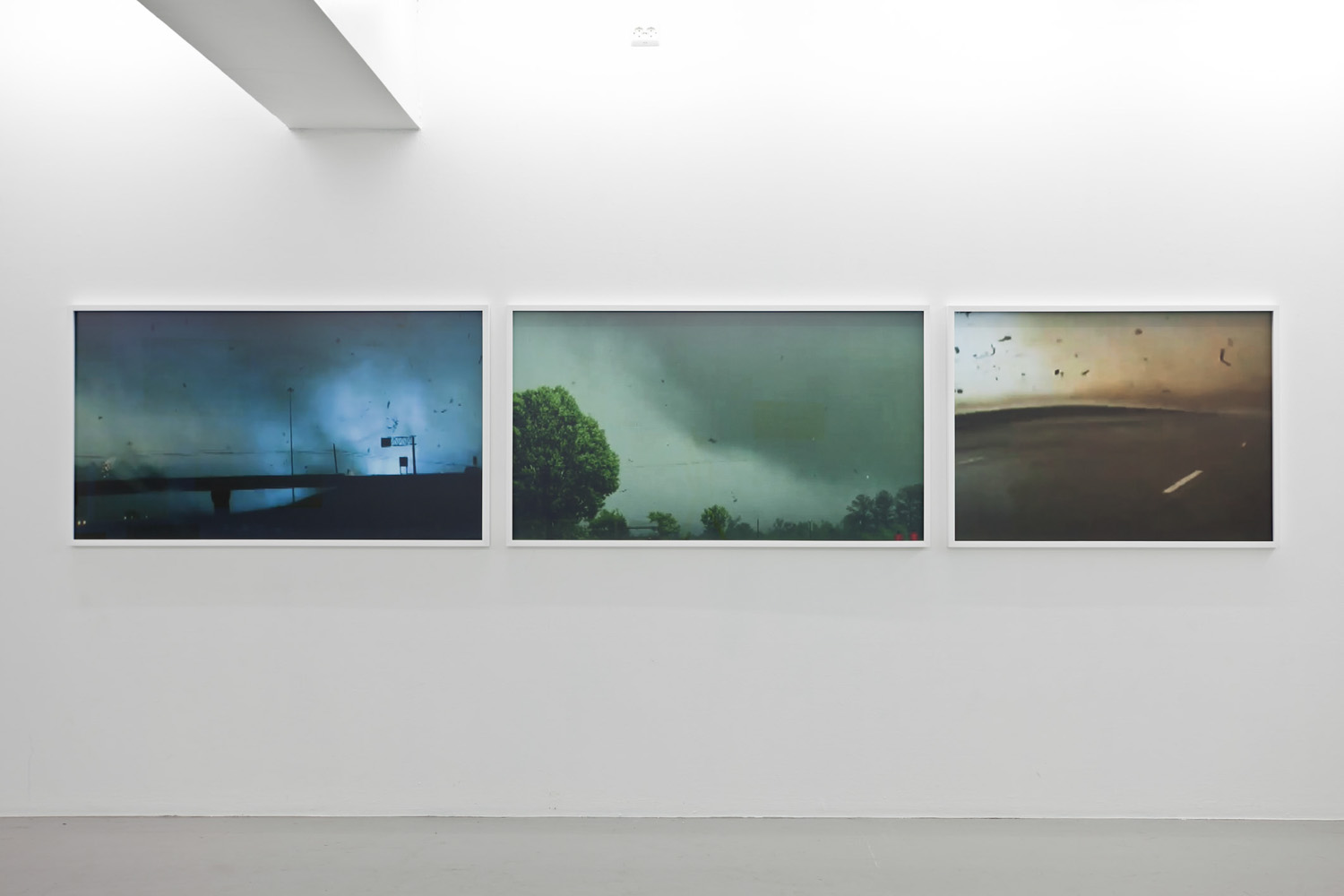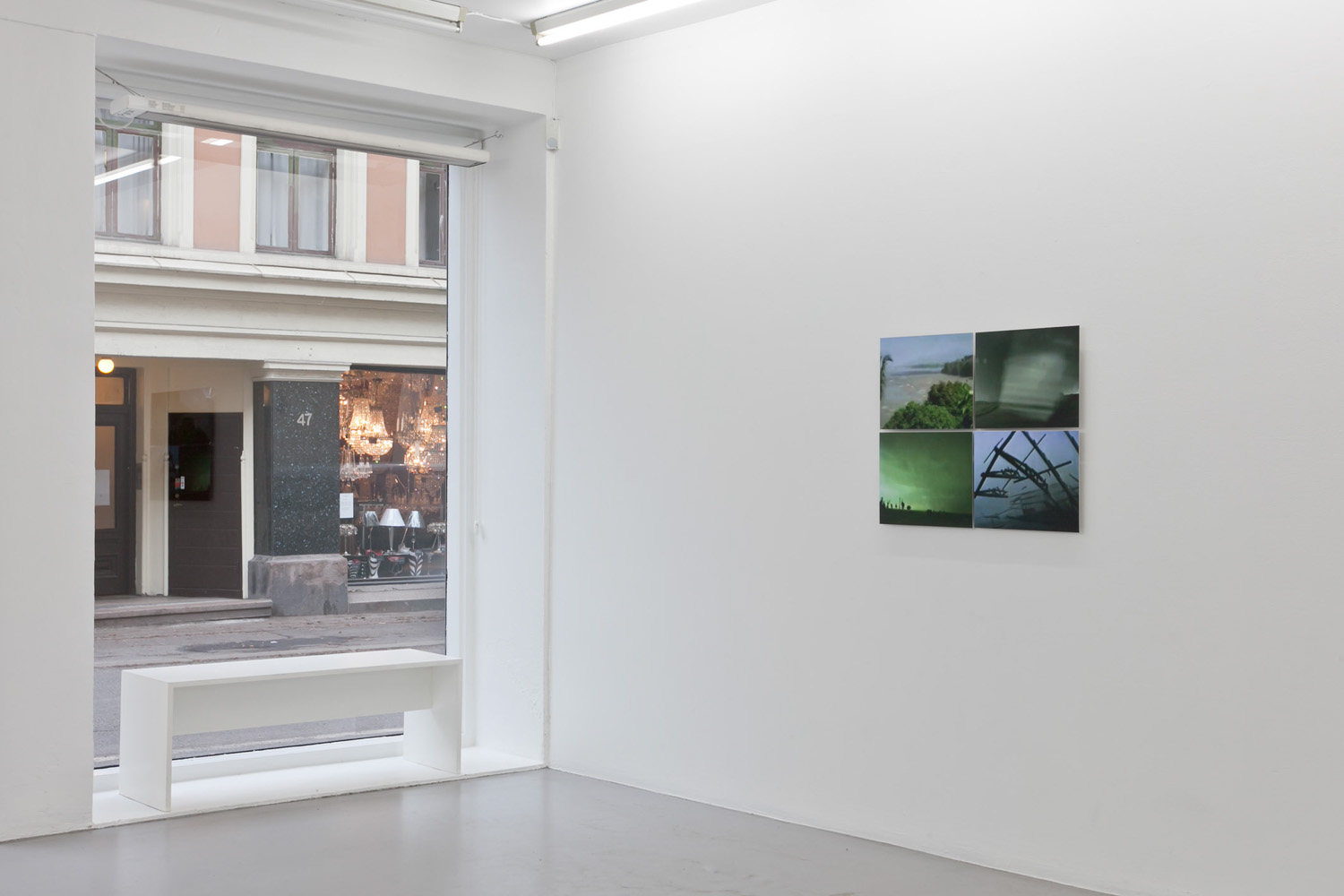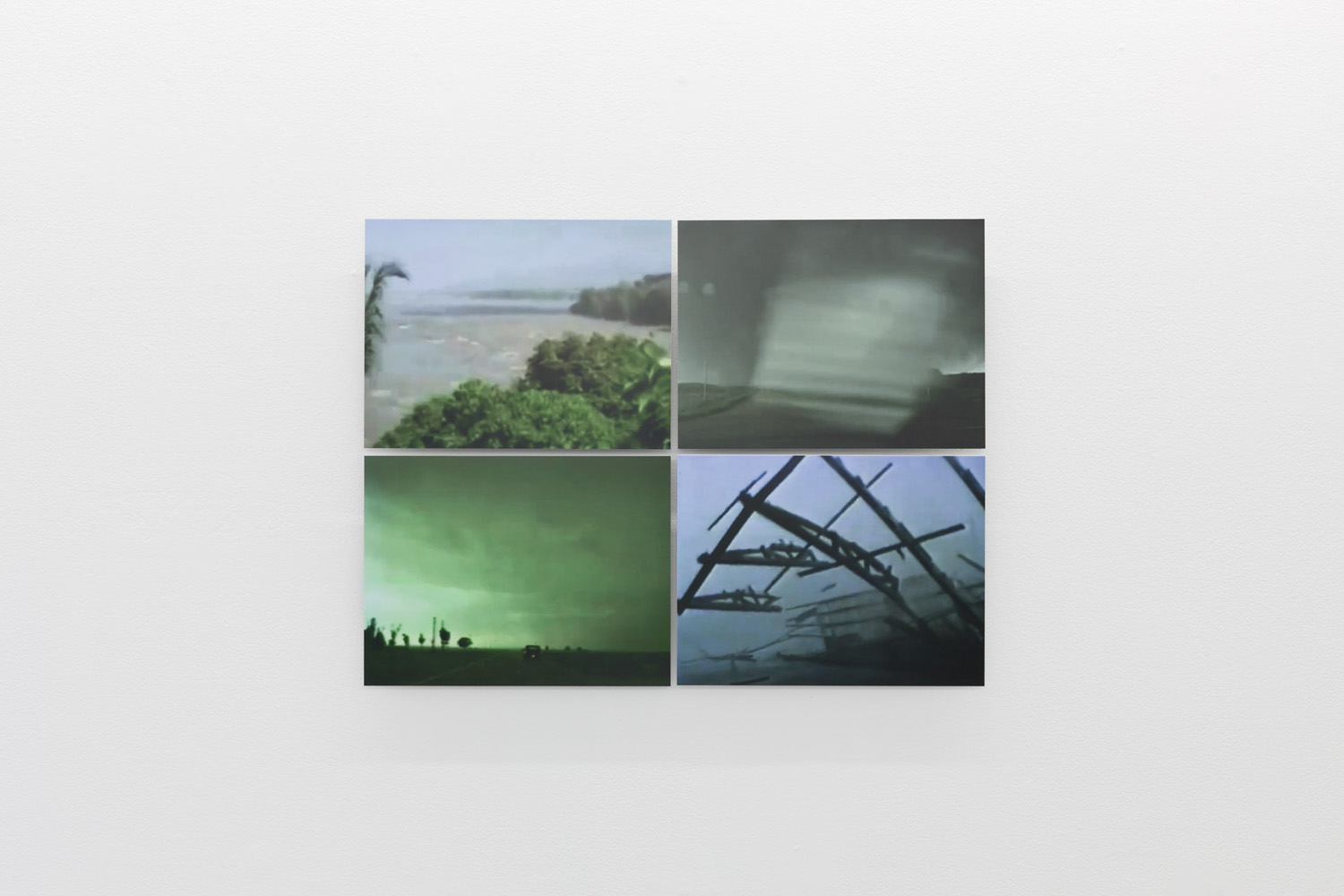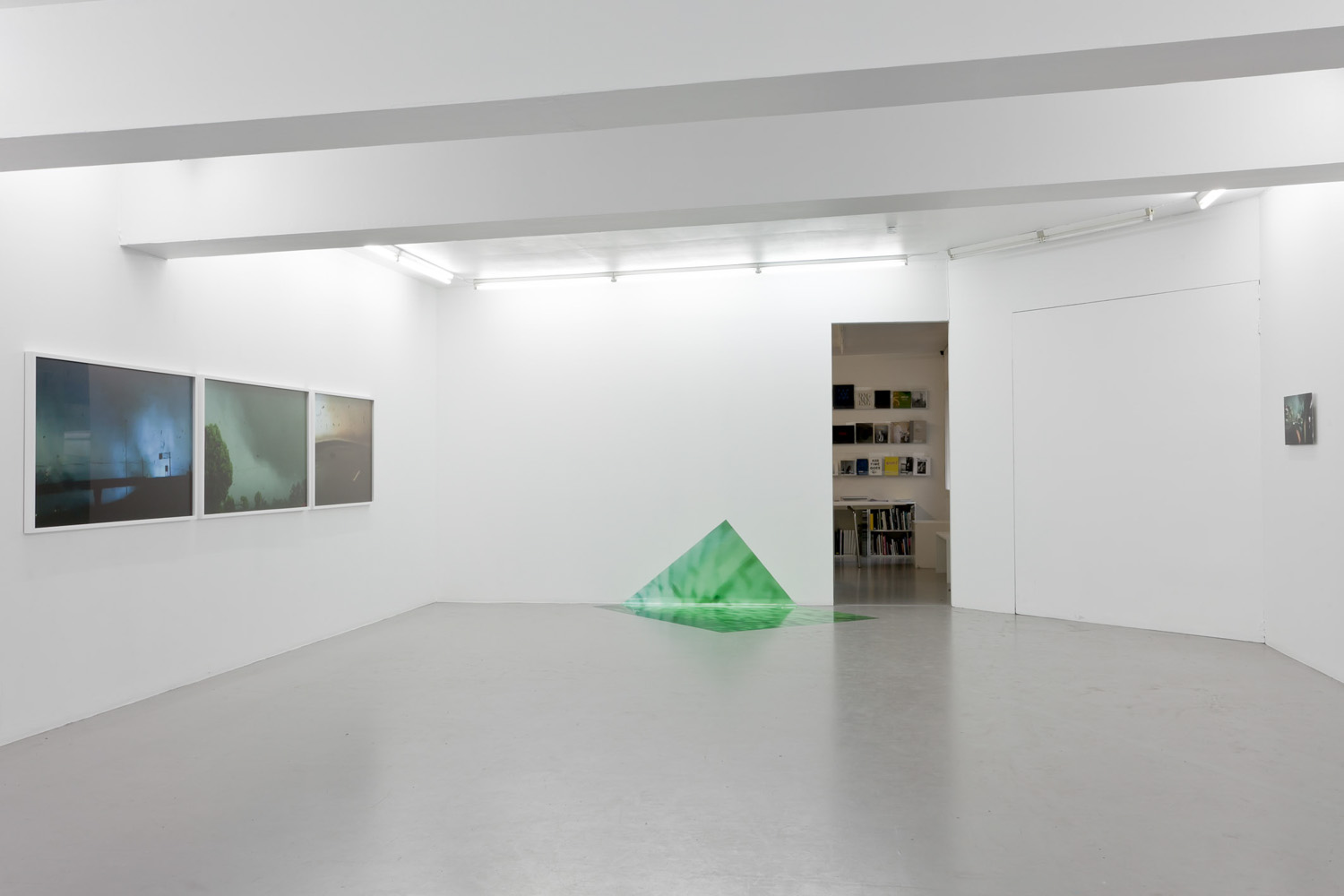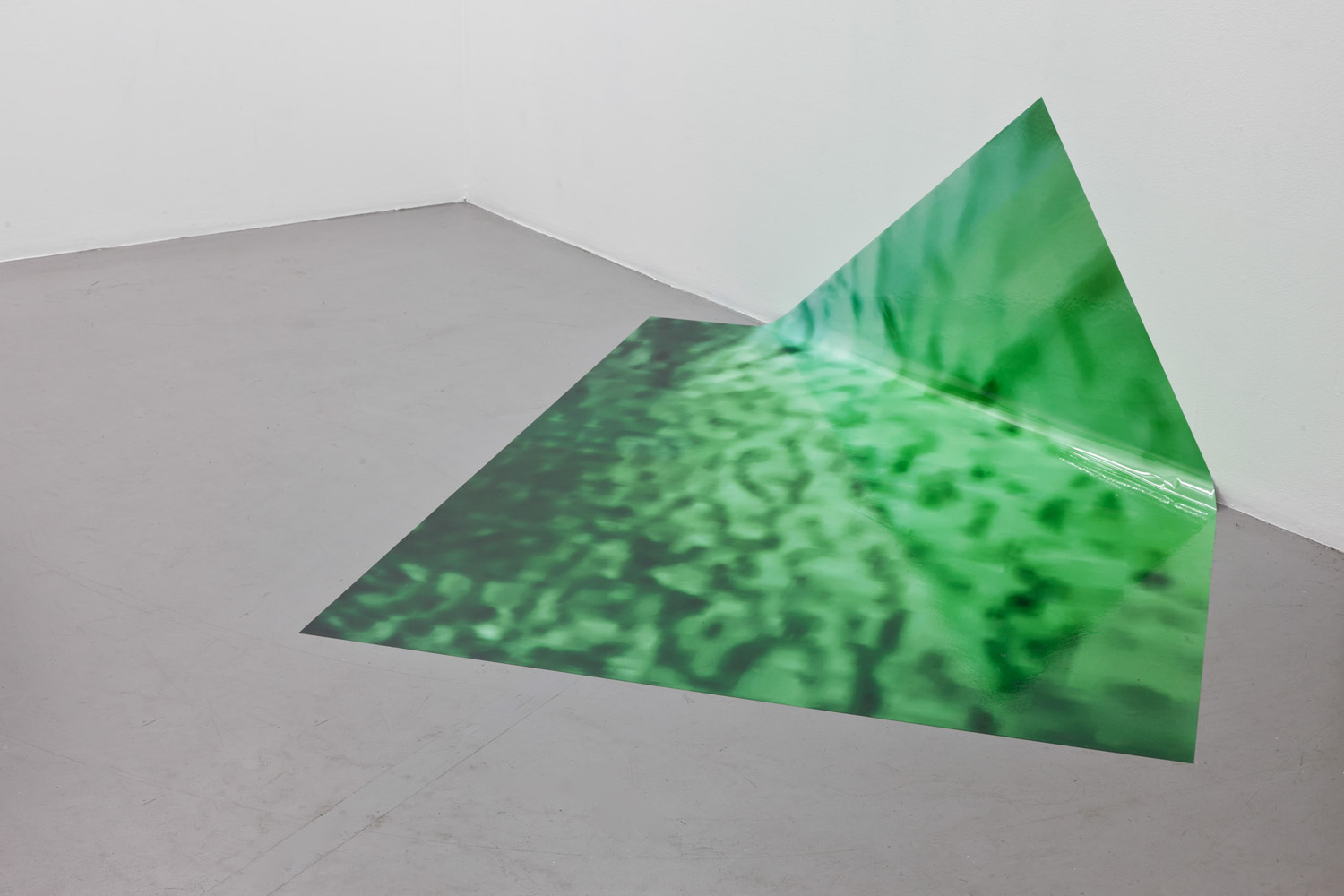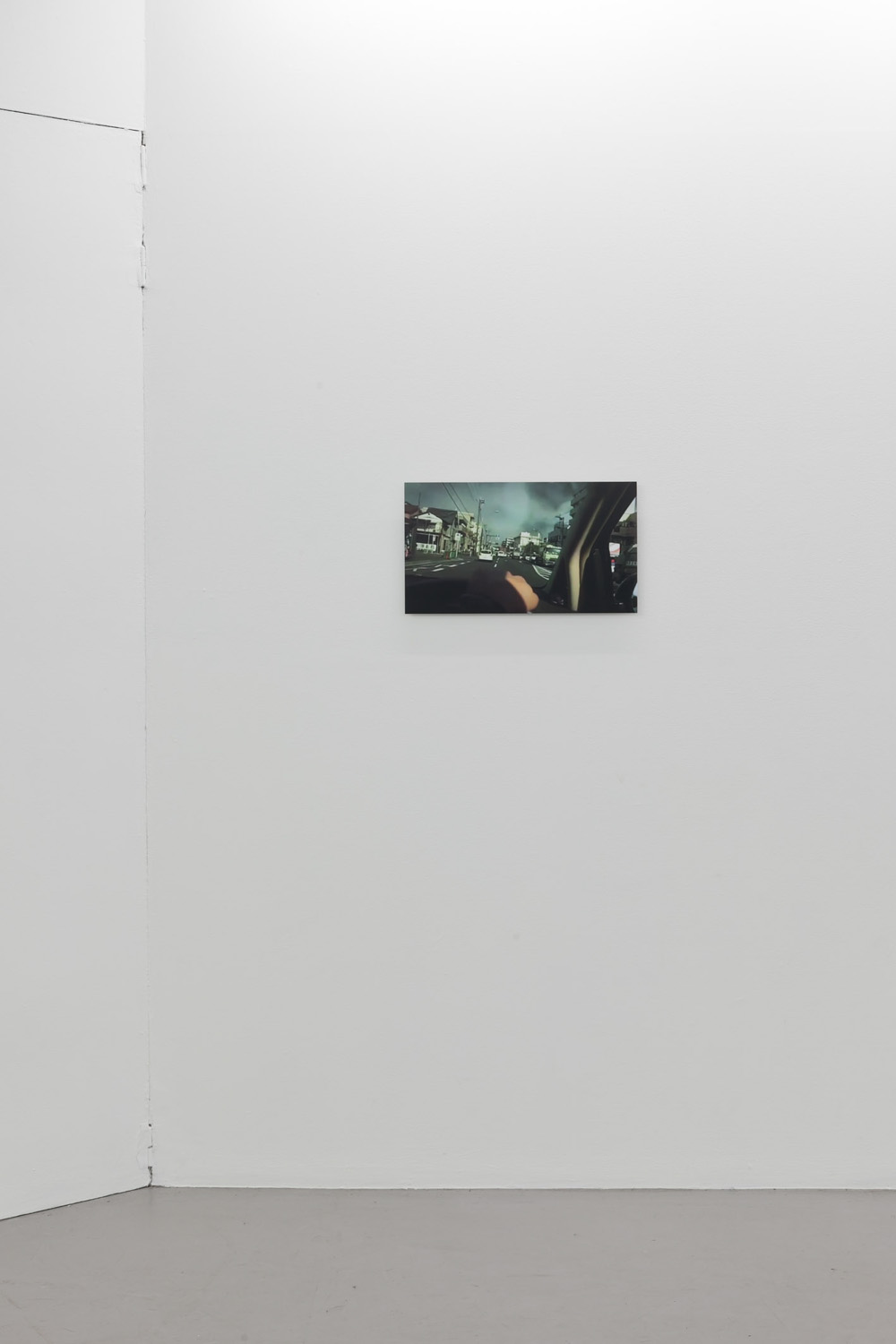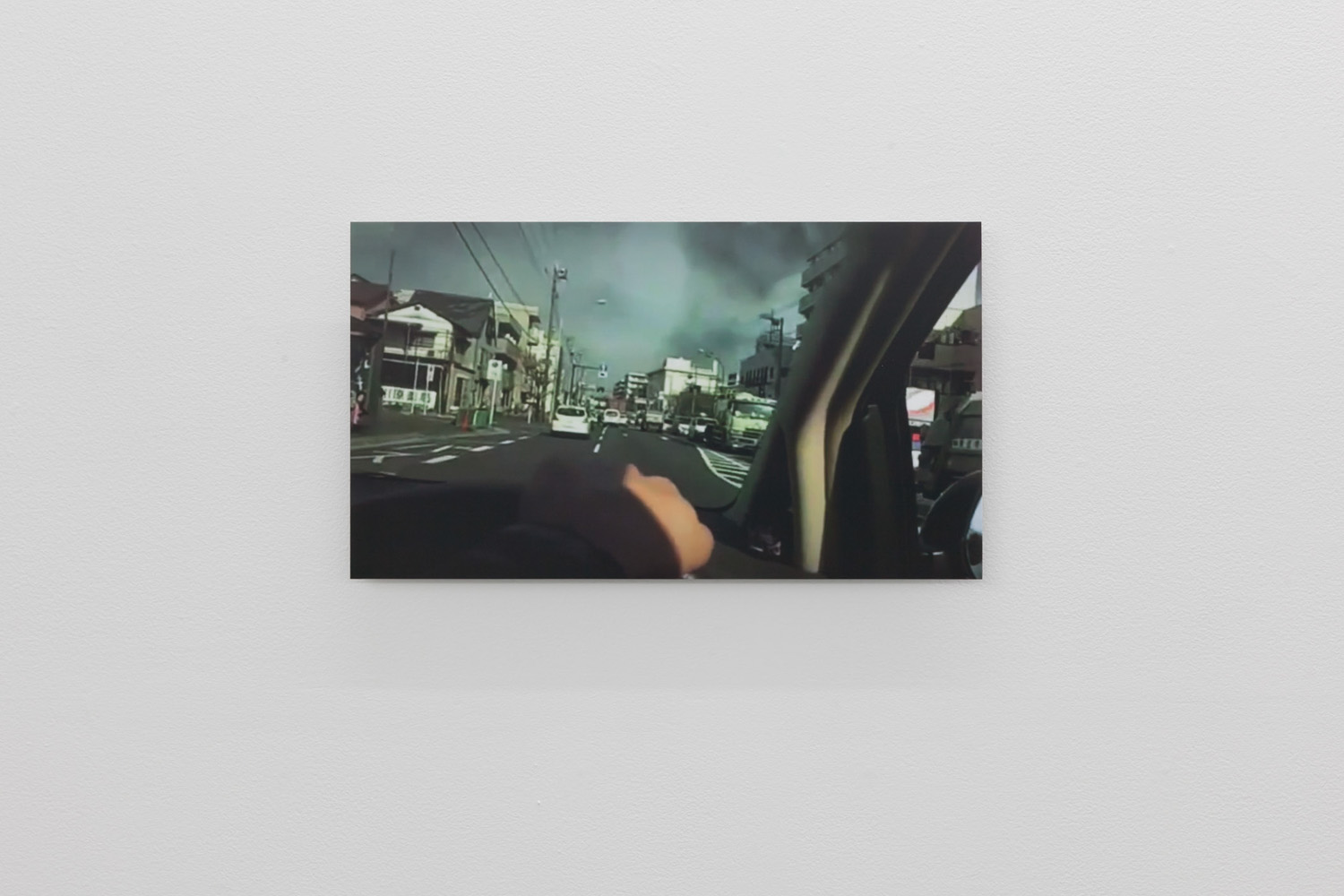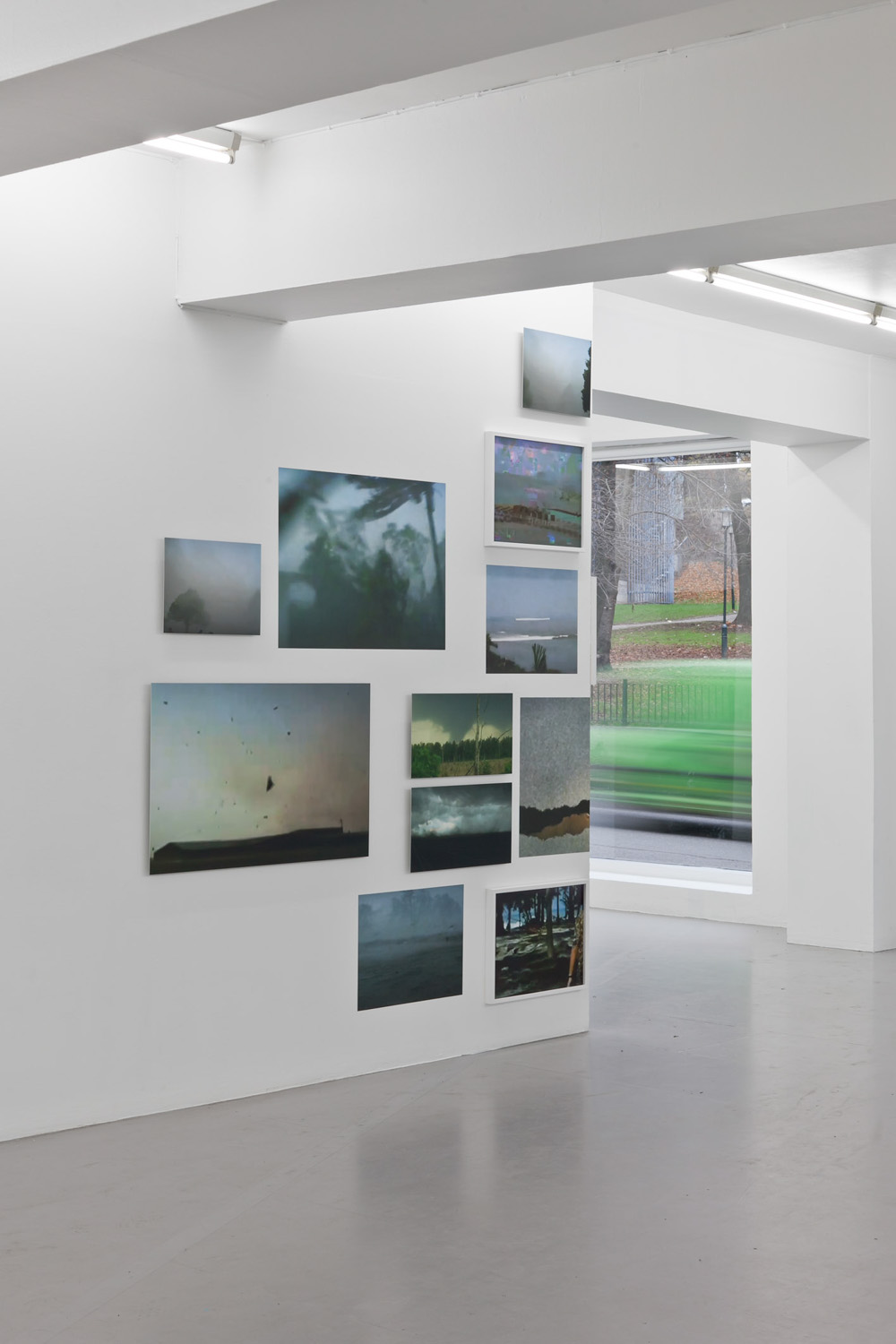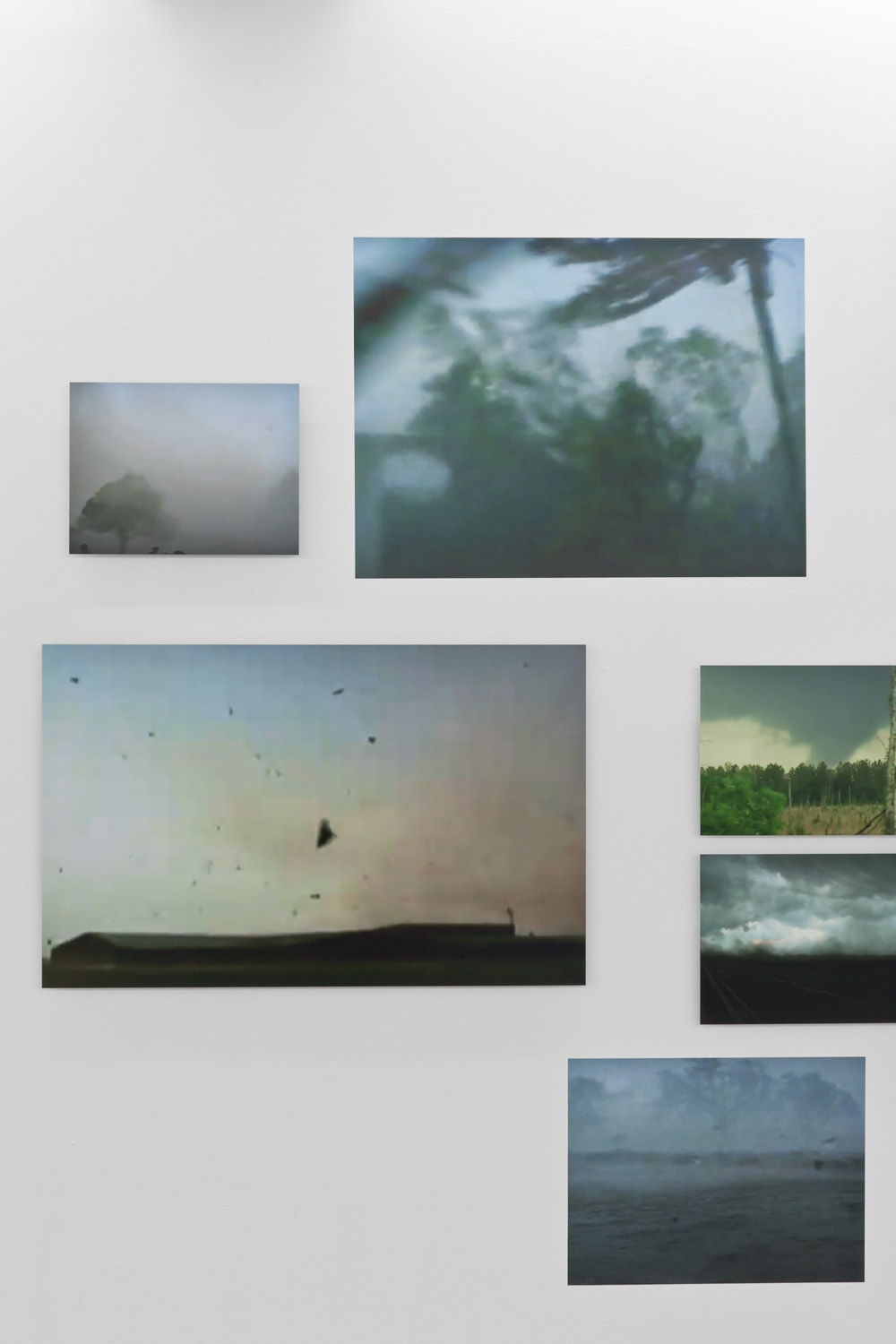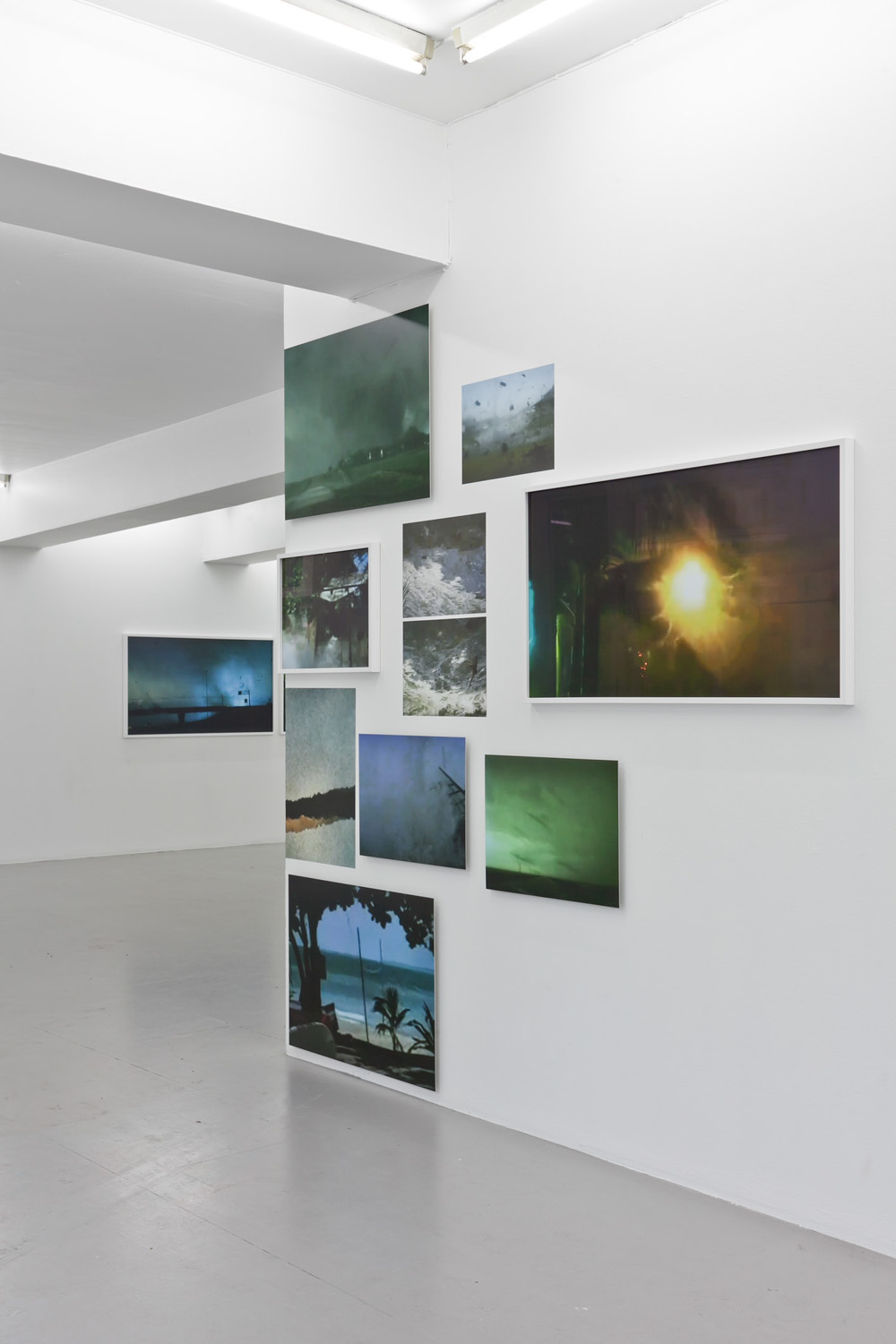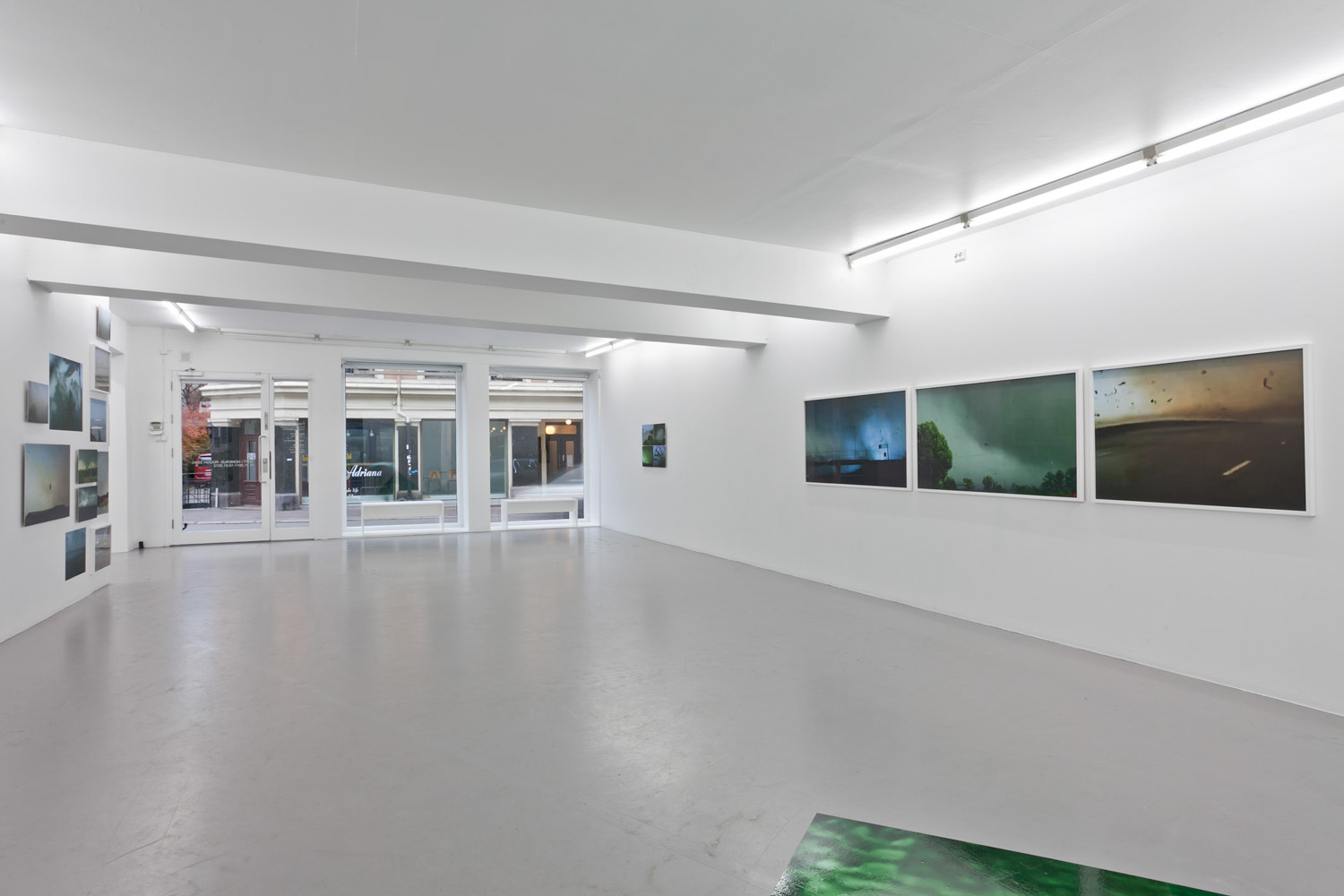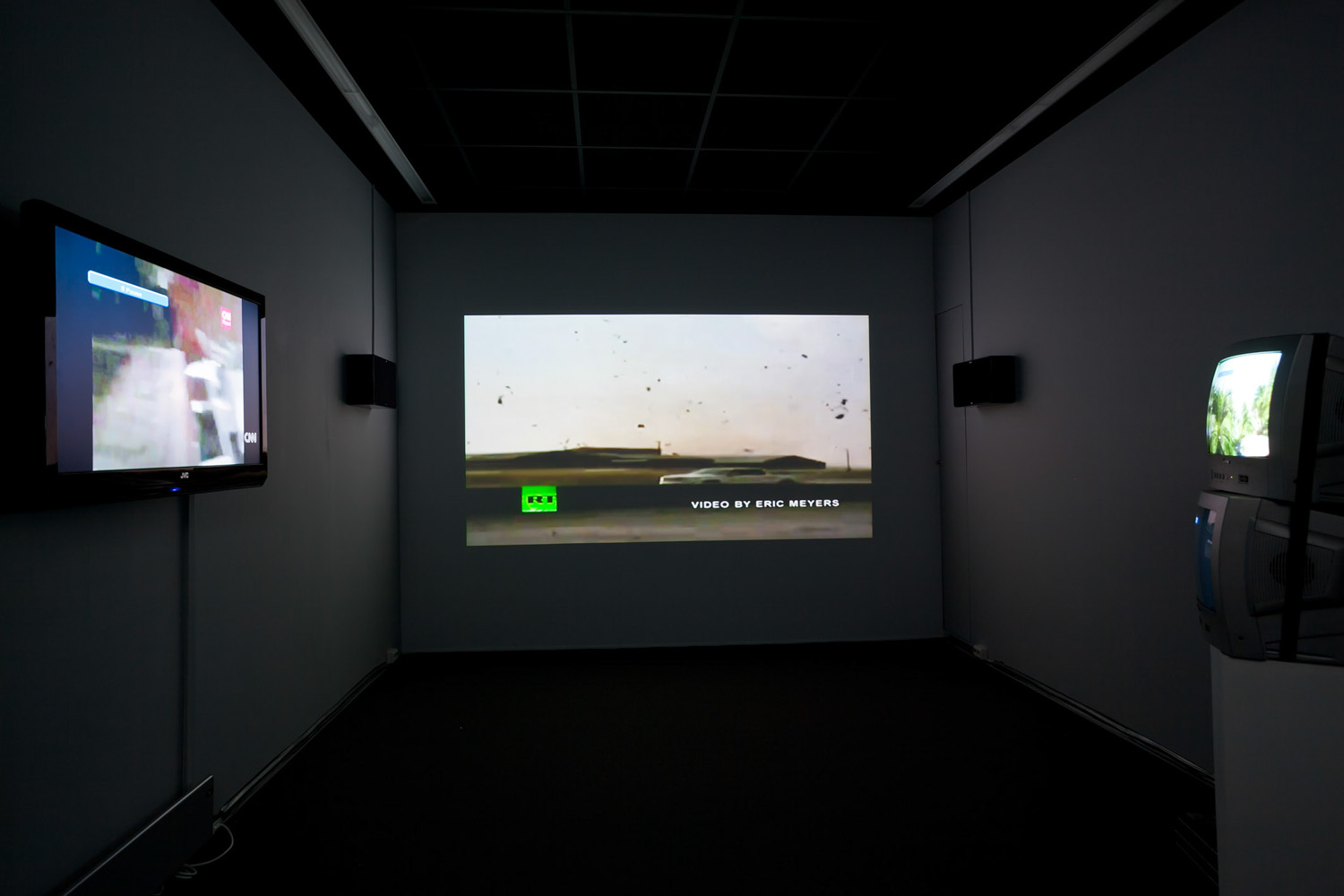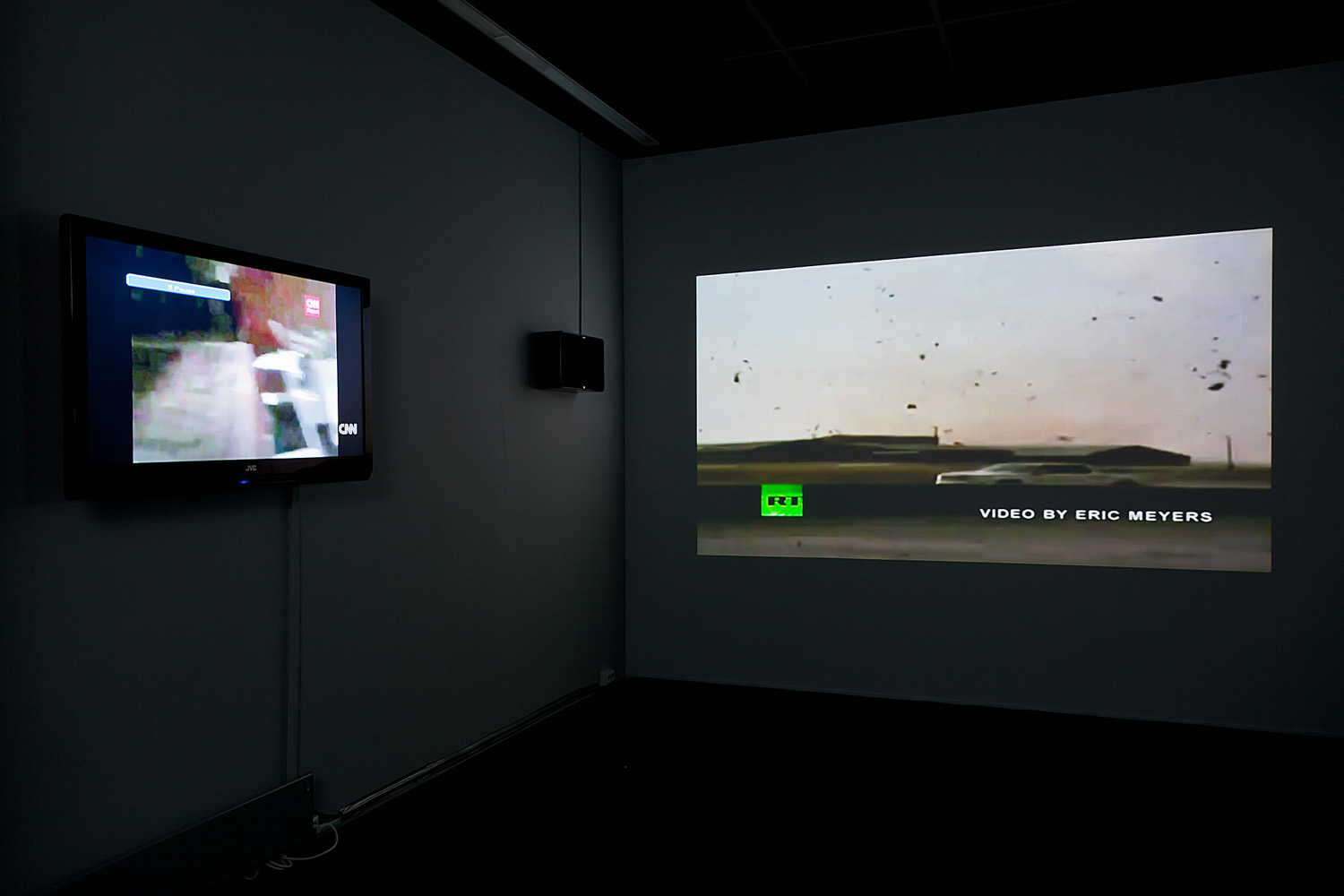Rough Seas
Fotogalleriet, 2011
In this work, TOFT/HONERUD explore the visual content of news reports from the hypothesis that news images are increasingly being emptied of content as reporters search for ways to communicate presence and authenticity.
The context of Rough Seas refers back to the work of the artist J.M.W. Turner, in particular one of Turner's most representative works, the painting entitled Rough Sea (1840-45), which expresses the formidable power of Nature in a sublime and romantic way. Many art historians have pointed out that Turner's work is also a reflection and expression of human feelings. This is where the work of TOFT/HONERUD in this exhibition finds its proper context: A personal experience and rendition, and the subsequent public exposure of images from natural catastrophes which are simultaneously an expression for our fear of and attraction to Nature. TOFT/HONERUD have abstracted and beautified images of several catastrophes taken off the internet and news programmes such as CNN iReport and other programmes that promote citizen journalism.
For the exhibition at Fotogalleriet, Nina Toft and Hilde Honerud use a video archive as the basis for their explorations. The presentation at the video gallery communicates a feeling of being out-of-control by altering the volume of the recordings and looping images to put the viewer out of balance. This is counterbalanced by the aesthetic way in which the photographs are presented in still images taken from the same media sources, which confront the visitors to the gallery with a romanticized image of incidents that until now seemed ruthless and intangible.
/ Stephanie Von Spreter
TOFT HONERUD undersøker det faktiske nyhetsinnholdet i bildene og tar utgangspunkt i en tese om at medierte nyhetsbilder i økende grad blir tømt for konkret innhold i en jakt etter å formidle tilstedeværelse og autentisitet.
Samtidig er Rough Seas en referanse til J.M.W. Turner, og spesielt hans maleri Rough Sea (ca.1840-45), et av Turners mest representative verker, som formidler naturens storslagenhet på den mest sublime og romantiske måten. Som påpekes av mange kunsthistorikere, er Turners arbeider også en refleksjon og et uttrykk for menneskets følelser. Det er spesielt her arbeidene i utstillingen finner sin rette kontekst: den private opplevelsen og opptaket, samt den påfølgende offentlige publiseringen av bilder fra naturkatastrofer er fremdeles et uttrykk for den simultane frykten for og tiltrekning til naturen. TOFT l HONERUD har også ytterligere abstrahert og estetisert bilder fra ulike katastrofer, med de har hentet dem fra internett og nyhetsprogrammer som for eksempel CNN iReport eller andre programmer som fremmer ”citizen journalism”.
For utstillingen på Fotogalleriet vil Nina Toft og Hilde Honerud presentere et videoarkiv som grunnlag for deres undersøkelser. Presentasjonen i videogalleriet vil formidle en følelse av å være ute av kontroll, med forskjellige lydnivåer og looper som setter betrakteren ut av balanse. Dette vil bli motvirket av en estetisert presentasjon av fotografier, stillbilder tatt fra samme opptak, som vil konfrontere de besøkende med et romantisert bilde av hendelser som hittil har virket nådeløse og uhåndgripelig.
/ Stephanie Von Spreter
Exhibition essay on aesthetic journalism
THE INTEGRITY OF REALITY
At a time when natural disasters are front and centre in the news, it is interesting to examine the images presented to us in the media. Natural disasters are chaotic, cataclysmic situations that are difficult to comprehend within a picture frame. And in the media’s relentless pursuit to convey presence and authenticity, the images become divested of their concrete meaning.
By Nina Toft and Hilde Honerud
After a major earthquake hit Tokyo on 11 March 2011, several Norwegian news channels, including NRK, TV2, and the online VG-TV, repeatedly broadcast a video by the Norwegian tourist Michael Astar. The video shows a nervous Astar wandering aimlessly through the streets of Tokyo with an unsteady camera, and we see fragmentary glimpses of buildings, roofs, streets, and random passers-by. In a panic-stricken voice, Astar reports of buildings shaking and collapsing and people crying, though this is not actually evinced by the images themselves. What makes this recording newsworthy for a Norwegian audience is the presence of someone with whom we can identify, a compatriot, who in an almost ecstatic fear relates his immediate reaction to the calamity.
During the tsunami that devastated the northeast coat of Japan as the result of that earthquake, a global audience was fed impressive, overwhelming video recordings taken from helicopters hovering above the landscape – not after the tsunami, but at the same time as the monster wave crashed over the Japanese coastline, inundating houses, cars, people, cities, and villages. In a country renowned for its cutting-edge technology, where “everyone” has a camera at hand, the killer wave was instantly relayed to us from a variety of angles, thus keeping life in the entertainment value and news interest for days on end. This was in stark contrast to for example the tsunami that ravaged Thailand in 2004, where the same two or three home video recordings were shown over and over again, and where bird’s-eye representations of the very moment of catastrophe were lacking entirely.
In his book Aesthetic Journalism: How to Inform Without Informing, Alfredo Cramerotti sheds light on how traditional investigative journalism relates to the conventions of representation as though the representation was reality itself. A focus on the aesthetics of the image can make us more aware that the system of representation is not identical with what it represents. Both news programmes and documentaries are a form of narrative, and coherence and meaning come first into being when facts are placed within a narrative structure that the viewer recognizes.
In May 2011, the BBC College of Journalism organized the BBC Social Media Summit, where leading figures from the world of news discussed social media’s impact on current news coverage. Journalists and editors from major news providers such as the BBC, the Washington Post, and the Guardian brought home the point of how the practice of journalism had increasingly turned from field journalism toward user-generated content (UGC). The UGC Hub in London, developed by the BBC’s Alex Murray, describes the journalists’ detective-like methods for verifying user-generated content, with journalists using maps to check the alleged location and examining weather conditions and shadows in relation to the reported time and place of the recording. This verification process is all about confirming that the images are authentic, fresh, and not previously broadcast. It is thus the image’s authenticity that is being confirmed through this verification process, while its aesthetics is not discussed. But what does the image actually communicate?
In her address at the seminar, Al Jazeera journalist Esra Dogramaci spoke of the democratization of the global news. Contending that the major news organizations have a responsibility for educating people in the use of social media, she launched the slogan “Give a voice to the voiceless”. Al Jazeera has in fact distributed cameras to people who want to spread their views and who believe they help democratize news coverage in countries with state-controlled media. The concept of the “citizen journalist” is used in regard to private individuals who take on the mantle of journalists and publish pictures, videos, or texts in recognized news channels, on YouTube, or on their own blogs.
When discussing journalistic aesthetics, it is of course highly relevant to examine how the recent uprisings and civil wars in places such as Egypt, Libya, and Yemen have been covered. There has been talk of a Facebook revolution and of how social media have inspired activism and solidarity among the population in these countries, something the authorities have attempted to control and quash. These and other recent examples show how compelling first-person experiences are to us. Soon after the terrorist bombing of the Government Quarter in Oslo on 22 July 2011, NRK posted a video taken by a passer-by named Johan Christian Tandberg, whose immediate reaction to the catastrophe was to take out his video camera and begin recording. We hear him speak with and try to assist injured people with one hand while operating the video camera with his other hand. The power of the images stems from their showing a presence, that someone is in the middle of the disaster zone and experiencing the havoc. In her 2003 book Regarding the Pain of Others, Susan Sontag reflects on the visual presentation of 9/11. At the Here is New York exhibition, which featured openly submitted photographs from that fateful day, the first pictures to be sold were from amateur photographers rather than professionals. Sontag uses this example to contend that professional know-how and experience are not necessarily an advantage in photography. Aesthetic effects such as blurriness, random cropping, and the imprecise reproduction of light are in fact photographic effects that news broadcasts have increasingly exploited to convey a sense of presence.
The use of surveillance camera recordings in news broadcasts on the Internet and TV has also recently increased, particularly in conjunction with natural disasters. For example, a surveillance camera recording taken during the earthquake in Port-au-Prince, Haiti, on 12 January 2010 was posted on the CBS website, with the caption “The CBS News Investigative Unit has acquired video of buildings collapsing in Port-au-Prince”. But the video does not actually show buildings collapsing; rather, what we see is a ground-level view of a short stretch of road and a couple of buildings, with no further activity. The narrative content is to be found not in the image itself, but in the trembling that reveals that the surveillance camera is affixed to the side of a building that is starting to wobble from the earthquake. The entire story is outside of the image itself and requires knowledge to be decoded.
Ever since the invention of photography, the visual imagery and aesthetics of how photos present the world around us has been intimately linked to the development of camera technology. News coverage is moving ever further away from investigative journalism toward an endless, continuous pursuit of momentary presence, even as the news broadcasts themselves edge ever closer to entertainment programmes – to becoming “infotainment”. In today’s intermedial news, news coverage is one sense being democratized since “everyone” can present the world as they themselves see it. At the same time, however, large media empires such as Rupert Murdoch’s News Corporation – a leader in satellite TV, movies, the Internet, and other media sectors, and currently under investigation for illegal phone taps – are steadily increasing their political power.
Photographs are of course by no means objective. But in the media coverage of a globalized world, there was previously a notion that we as observers were to be placeless, incorporeal, omniscient, and impartial. In the arts there has been talk of a “documentary turn” since Documenta 11 in 2002, and artists have approached and interpreted the concept of the documentary in a variety of ways. One such way has been as a representation of specific human experiences: instead of using the photography to watch the suffering the others, as Susan Sontag discusses press photography in Regarding the Pain of Others, we want today to see beyond the distance that photographic images entail, in an attempt to experience the world through another’s gaze.
The press photograph’s principal value in presenting the news has traditionally stemmed from exclusive access to the events, the fidelity of the representation, and the quest for the iconic image. Two exhibitions from 2011, Antiphotojournalism at Foam in Amsterdam and All That Fits: The Aesthetics of Journalism at QUAD Derby, put forth a number of alternative strategies for the image as a conveyor of news. The exhibitions demonstrated that contemporary art can be a venue for presenting news, free from the conventions of mass media and the directives of the global news conglomerates.
An example from Documenta 12 is the Indian artist Amar Kanwar’s video installation The Lightning Testimonies, which deals with personal experiences of sexual violence in wars and conflicts, as well as the mechanisms that enable such violence. Though the installation reveals his educational intent and social activism, Kanwar eschews the conventions of the documentary, using instead form, composition, staged events, and non-linear narratives.
In the article “Documentary Uncertainty” from Documenta 12 Magazine, the artist and theorist Hito Steyerl discusses the concept of documentarism and investigates the development and availability of camera technology and the distribution of images. She introduces what she calls “the uncertainty principle of modern documentarism”: the only thing that is certain in today’s documentaries is that we inevitably doubt whether what we’re seeing is true. Steyerl contends that documentary techniques are one of the primary characteristics of art in the 1990s, but argues that artists who used such techniques neglected to consider that also documents are a concentration of power, authority, expertise, and knowledge hierarchies. As Steyerl points out, the conventions that continue to underlie documentaries are based on educational aims and social criticism, where the medium is frequently perceived as transparent. The political meaning of camera-based expressions does not necessarily lie in the given themes, but also emerge in the way these expressions are organized.
As artists, our interest is in the image and in the role that camera-based images play in society. In a society that is replete with imagery, situations constantly arise where we must read and interpret images, and it is strange how rarely society reflects on such interpretation. For our upcoming exhibition at Fotogalleriet, we have created an archive of video clips from natural disasters that have been published in the news. The striking part of these emotionally charged videos is that when they are taken out from their proper context, they become devoid of meaning and fail to relate any particular narrative.
When working on this archive, our basic idea was to break the material down into its constituent components by separating sound and image and by extracting still frames from the video. In our presentation we collocate images from different events in new ways in order to create a new space. We thus liberate the images from their original context in order to open up new narratives.
ToftHonerud presents its project at Fotogalleriet from 10 November to 23 December 2011.
Oversatt av Stig Oppedal for The Wordwrights

